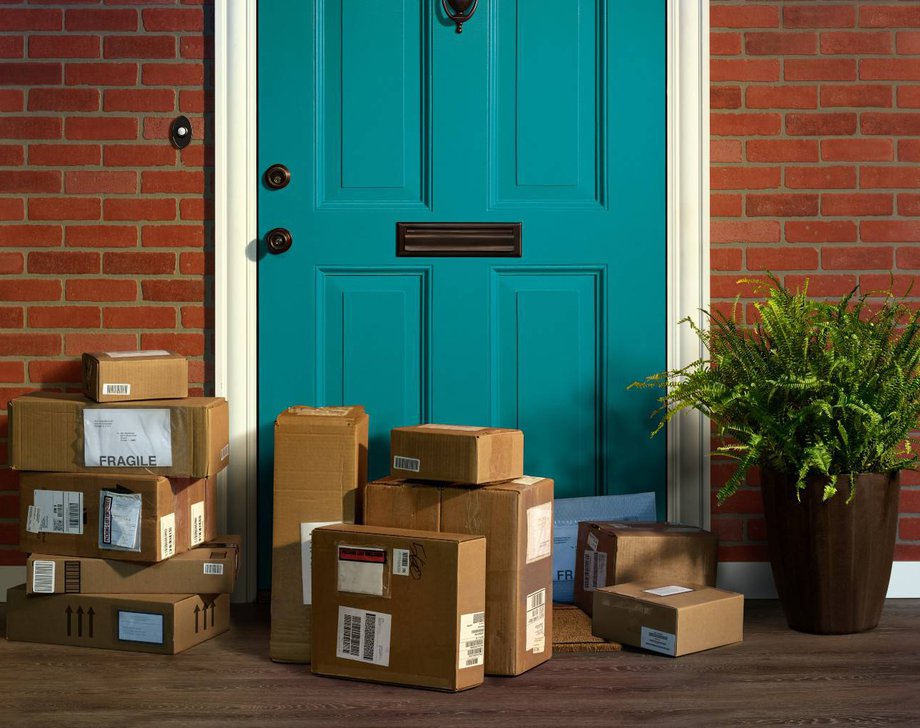Online sales growth is returning to its slower, pre-pandemic trajectory. As shoppers head back into stores, new expectations around service are setting the stage for the next chapter of retail. [What Happens When the E-Commerce Boom Ends – BoF]
- E-commerce growth is slowing after a spike in 2020, returning to a pre-pandemic trajectory.
- Shoppers are returning to stores with raised expectations around service and convenience.
- Retailers must go beyond basic offerings like curbside pickup and aim for a totally seamless customer experience.
E-commerce currently makes up 69 percent of sales, only slightly higher than the channel’s share in 2019. Catbird’s trajectory is typical in the industry: Nordstrom and Calvin Klein-owner PVH are among the retailers that saw e-commerce growth slow down relative to 2020, while Shopify warned investors in February that “the Covid-triggered acceleration of e-commerce” won’t spill into 2022.
In the fourth quarter of 2021, e-commerce in the US made up just under 13 percent of total retail sales — down from nearly 16 percent in the second quarter of 2020, when online transactions spiked. After roughly two years of unprecedented digital growth, during which many retailers directed all their resources toward the channel, e-commerce demand has normalised, returning to its slower, pre-pandemic trajectory.
For brands that pivoted to online sales in 2020, it’s not as simple as steering those investments and marketing dollars back to physical stores. People may be shopping in person again, but how they shop has been irrevocably altered by the last two years. Consumer needs have changed, whether they moved to a permanent work-from-home lifestyle or migrated from the city to the suburbs. They increasingly expect the convenience of click-to-order when they walk into stores.
“How people are shopping now, it’s hard to predict,” said Rony Vardi, who founded Catbird in 2004. “I have more questions than I have answers.”
Always Online
More than half of adults say they enjoy shopping in stores less than they did before the pandemic, according to a Forrester survey conducted last July.
“Consumer expectations coming out of the pandemic are going to be much greater,” said retail consultant Doug Stephens. “We’ve moved into the post-omnichannel reality of the market.”
Stephens is referring to how, during the pandemic, retailers large and small built services designed to make shopping safe and efficient. Stores became mini-warehouses fulfilling and shipping online orders. Once-niche perks like the ability to buy an item online and pick it up in store became commonplace. The ability to see on a brand’s website which products were available in which stores, once seen as a relatively sophisticated e-commerce tool, is now the norm.
We’ve moved into the post-omnichannel reality of the market.
These functions have made shopping much more convenient for the consumer and will continue to serve their purpose in the coming years. But as the digital and physical retail worlds have merged, brands are having to invent new ways to stand out.
“Customer experience at stores … is definitely changing because of e-commerce and vice versa because they are not anymore isolated points of contact between the company and the customer,” César de Vicente, retail manager at Spanish fast-fashion retailer Mango, told BoF in an email statement.
Instead, Mango is setting out to create what de Vicente calls a “phygital ecosystem of experiences,” in which stores incorporate a number of digital functions, such as being able to purchase online products from the physical location — if, for instance, a customer tried on a dress but wants it in another colour that’s only available online — and customer behaviour analytics that measure how and where consumers spend their time in stores.
“Now that everyone has the tools,” said Susan Anderson, retail analyst at B. Riley Financial, “it’s becoming harder and harder to separate them.”
A Better Shopping Experience
Of course, retailers can improve their in-store customer service the old-fashioned way. Catbird, for instance, created a new position, product knowledge lead, a role that will oversee store associates’ training and ensure that every member of the retail team is familiar with the jeweller’s assortment.
An unproductive encounter with a store associate, after all, can turn a consumer away from the brand. Ideally, store personnel are thoroughly informed on product assortment and can locate certain styles on the spot. If something isn’t available, then store associates should be able to tell the customer where it is in stock, online or in other stores.
In a brick-and-mortar setting, brands are still figuring out that the onus really is on the sales associate.
The goal should be for anyone to walk into a store with the brand’s catalogue in hand and the store associate to be able to know the story behind every product, according to Elyce Arons, co-founder and chief executive of Frances Valentine, a womenswear and accessories brand.
“In a brick-and-mortar setting, brands are still figuring out that the onus really is on the sales associate and how to make them extra value-add rather than a potential detraction of the brand,” said Michelle Kluz, partner in the consumer practice of consulting firm Kearney.
Online-Offline as One
If omnichannel was about connecting online and offline shopping experiences, the next level requires merging the two channels as one.
At Frances Valentine, Aron has integrated the two channels internally so that the in-store shopping experience can incorporate the best attributes of online shopping and vice versa.
For instance, the brand’s online customer service team receive their training inside actual stores so they can get to know the product and the culture of the company. Frances Valentine stores now offer Afterpay services after seeing its success online. By facilitating constant communication among teams, store managers and merchandisers can leverage e-commerce data regarding sizing and fit issues, while digital marketers use intel from retail personnel about what shoppers like and don’t like to inform email campaigns.
At Catbird, another new position aims to further connect the digital user experience to that of the physical store. Dubbed the director of customer experience, this position will make shopping in either channel feel more consistent, such as in communicating in-store services and making sure that all customer-facing employees are trained with the same set of information.
Online, too, can feel closer to the in-store experience, according to Leigh Batnick Plessner, Catbird’s chief creative director. By using illustrations and product photography modelled by company employees, the brand tries to capture the magic of shopping and translate it digitally.
“Sometimes we’d see these hand and face prints in the windows, where people were trying to peer into our store,” Plessner said. “We want online to also have that immersive experience … And if you live in Malaysia but shop from Catbird and you walked into the store for the first time, the goal is for the store to feel familiar.”



